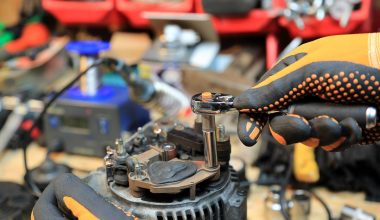It can be tricky working out which is the best blade to use with your bandsaw. You have to work out what you are cutting, and the type of cuts you are looking to make. Often, we find that most common cuts can be made with one combo blade. However, if you choose the wrong blade it can ruin a project.
The following is our comprehensive guide to choosing the right bandsaw blade.
Bandsaw blade width
Everyone always talks about having the correct width blade for your cut and how it can help produce great results. But what should you be thinking about when choosing yours?
What is blade width?
Blade width is the measurement from the front tip of the teeth to the rear of the blade. Depending on your machine it may require certain blade width being used, while others can handle a variety of widths.
There are two main considerations when choosing your blade width, depending on if you are using the saw for cut-off or contour sawing.
Cut-off sawing needs to be straight and controlled. This means you should fit the widest blade that your bandsaw can accommodate. The wider the blade the straighter the cut as a general rule. Plus, you will be able to cut at a higher speed.
Contour sawing is more complex as the width depends on the minimum radius required for the job at hand. A narrower width allows for a tighter radius to be cut. See our table below for the common blade widths and minimum radius they can achieve.
| Blade Width | Minimum Radius |
| 1 inch | 7 inches |
| ¾ of an inch | 5 ½ inches |
| ½ an inch | 2 ½ inches |
| ¼ of an inch | 5/8 of an inch |
| 1/8 of an inch | 3/16 of an inch |
It’s important to pick the blade width that will suit your needs. If you need to cut tight radii then a smaller blade width is required. However, for ripping material such as planks a wider blade will provide a straighter cut.
Choosing bandsaw blade thickness
Blade thickness is determined by the bandsaw you are using. The blade must be able to curve around the wheels, it is best to check your manufacture guidelines. The thicker the blade the more strain it will be able to handle, this is good for denser materials such as hardwoods and metals.
Bandsaw blade tooth styles
Blades come in different widths and thicknesses, but the most important factor is how they cut. Various styles are made for different uses with varying gullet depth and rake angles.
What is the tooth gullet?
The gullet is the area between the tip of each tooth. These are essential as they allow for the debris to be removed from the cut and allow the tooth the rip into the material. The deeper the gullet the less likely it is to be blocked with sawdust or woodchips causing blade twist.
What is tooth rake?
The tooth rake is the angle of attack that a blade has against the wood. This often ranges from the common zero-degree rake to up to 10 degrees. A sharp rake can lead to a coarser cut.
Regular tooth
The most common style of bandsaw tooth style is the regular tooth. They have a 0-degree rake and are used for general purpose cutting. They are also great for contour sawing as they provide a fine cut with a good finish.
Hook tooth
With a 10-degree rake angle and a deeper gullet hook tooth blades look like they mean business. They are good for faster cuts and where a rough edge doesn’t matter as much. Use for long rip cuts, and stronger materials such as plastic and metal.
Skip tooth
Similar to the regular tooth a skip tooth has a 0-degree rake but a much deeper and wider gullet. The wide gullet helps debris to easily fall out after the cut. This is great for applications where there is lots of material such as plastics and softwood.
Blade teeth per inch
In general, we recommend using a bandsaw blade with no more than 3 teeth per inch. However, it depends on the thickness of the material you are cutting and the type of cut you are making. A good rule to go by is to have at least three teeth in the material during cutting. This makes sure for a stable and accurate cut.
Some cases require 4-5 teeth per inch as they can provide a smoother more accurate cut. However, be careful not to allow the debris to build up too much as the gullet will be smaller.
Conclusion
Overall there are many factors to consider when choosing your next bandsaw blade. But always keep in mind what you will be cutting most often. Don’t forget it is easy to change your blade if you need to and is a good excuse to give your machine a good check and clean!






